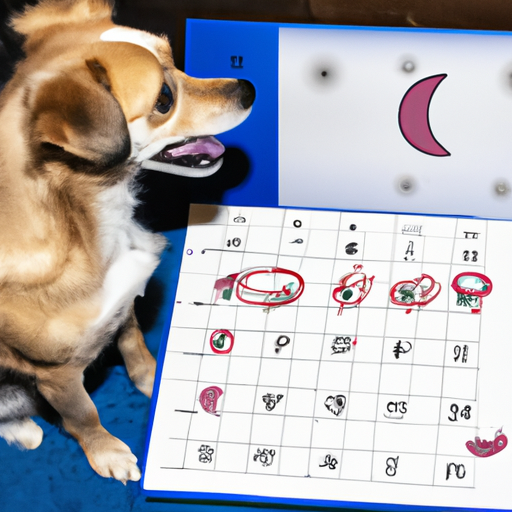Introduction
You, as a loving and devoted caregiver, have probably noticed changes in your female dog’s behavior and have wondered whether dogs experience periods, just like humans. This article aims to provide a comprehensive answer to all your queries.
Understanding the Canine Estrous Cycle
Contrary to common belief, dogs do not have periods in the human sense. Instead, they go through an estrous cycle, often referred to as “heat” or “season”. The frequency and duration of this cycle vary from dog to dog, but typically it occurs:
- Every six months for smaller breeds
- Once a year for larger breeds
In the canine world, the estrous cycle consists of four stages:
- Proestrus: Female dogs attract males but are not ready to mate. This stage lasts for about 9 days, but it can range from 3 to 17 days.
- Estrus: Females are ready for mating. This stage lasts for about 9 days but can vary from 3 to 21 days.
- Diestrus: Pregnancy or pseudo-pregnancy occurs. This stage lasts for about 60 days but can range from 50 to 80 days.
- Anestrus: Resting period. This stage lasts for about 60-90 days before the cycle repeats.
Recognizing the Signs of Heat
Your furry friend cannot tell you when she’s in heat. So, it’s up to you to recognize the signs. These can include:
- Swelling of the vulva
- Changes in behavior, such as increased affection or aggression
- Spotting or bleeding, which is the closest thing to a ‘period’ in dogs
Managing Your Dog’s Heat Cycle
As a caregiver, your role during your dog’s heat cycle is crucial. Here are some tips:
- Keep your dog comfortable: Provide a cozy bed and lots of affection.
- Avoid unneutered male dogs: They can smell a female in heat from miles away.
- Use doggie diapers: To manage spotting and keep your home clean.
Health Concerns Related to the Heat Cycle
While the heat cycle is a normal part of a dog’s life, it does increase the risk of certain health issues, such as pyometra (a uterine infection) and mammary cancer. Regular vet check-ups are recommended.
| Health Concern | Symptoms | Treatment |
|---|---|---|
| Pyometra | Increased drinking, vomiting, and lethargy | Immediate surgery is often required |
| Mammary Cancer | Lumps in the mammary glands | Surgery, chemotherapy, radiation |
Frequently Asked Questions (FAQs)
Q: Can I get my dog spayed to avoid the heat cycle?
A: Yes, spaying is a common procedure that prevents female dogs from going into heat and can protect them from certain health risks.
Q: How old is a dog when she goes into heat for the first time?
A: Most dogs have their first heat cycle between six months and one year of age.
Q: Does a dog’s behavior change during the heat cycle?
A: Yes, dogs can become more affectionate or aggressive during their heat cycle.
Remember, as a caregiver, your dog relies on you to understand and manage her needs during her heat cycle. With the right knowledge and care, you can help her navigate this natural process with ease and comfort.



